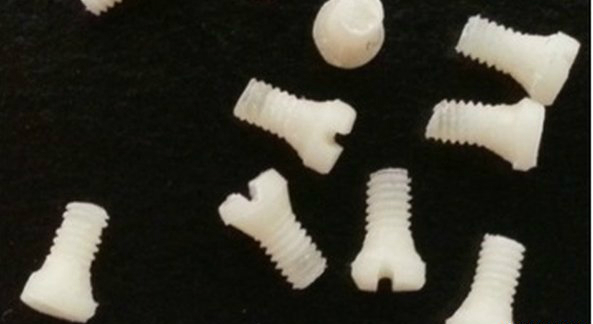
Calendula (Calendula officinalis)
Calendula—also known as pot marigold—is a centuries-old antifungal, antiseptic, wound-healing ally according to the National Library of Medicine (NLM). It’s the petals of these cheerful yellow and orange daisy-like flowers that lend skin-soothing properties to many natural cosmetics and diaper creams.
A freely reseeding annual that blooms all season long, Calendula makes a lovely addition to gardens with full sun. Harvest the petals fresh, or dry entire blooms—which close in the evening—before they’ve formed seeds.
Cilantro (Coriandrum sativum)
Cilantro boasts a unique flavor you either love or hate. The leaves often garnish Mexican and Thai dishes, and the seeds—known as coriander—are a prime ingredient in Indian curries. Few think of this plant as a medicinal herb, but as noted in Phytotherapy Research, it’s a powerful digestive aid and cleansing agent capable of removing heavy metals and other toxic agents from the body.
Cilantro grows best in a cool, moist garden and will quickly bolt in hot weather. Look for slow bolt varieties from seed companies.
Lemon Balm (Melissa officinalis)
This calming and uplifting perennial makes a pretty patch of bright green in the garden. The oils, tannins, and bitters in lemon balm’s fragrant leaves and flowers have a relaxing antispasmodic effect on the stomach and nervous system. When used topically, they help fight off viruses like herpes simplex according to the University of Maryland Medical Center (UMMC). Lemon balm is tasty and gentle enough for children when prepared in teas or tinctures with a glycerin base.
It’s a great plant to grow and use fresh, as the dried herb loses some potency after six months.
Peppermint (Mentha x piperita)
Familiar flavors in toothpaste and chewing gum, both spearmint and peppermint pack a powerfully refreshing zing. The National Center for Complementary and Alternative Medicine (NCCAM) reports that peppermint makes stronger medicine than its more culinary cousin. It readily relieves digestive discomforts like indigestion and vomiting when brewed as tea and soothes sore muscles in liniment recipes applied topically.
All mints spread rampantly in a moist garden, so consider growing each plant in its own large pot. Harvest leaves just before flowering. After that, they begin to taste bitter.
Rosemary (Rosmarinus officinalis)
Rosemary is the great reviver. This perennial woody herb stimulates energy and optimism and sharpens memory and concentration by bringing more oxygen to your brain, according to UMMC. It’s a wonderfully stimulating alternative to caffeine when you need that second wind!
A row of these long-lived and drought-tolerant plants makes a beautiful, bee-friendly, evergreen hedge. You may only need one plant in your garden, as a little bit goes a long way.
Mullein (Verbascum thapsus)
Give this handsome and stately biennial plenty of space, and stand back in wonder—the sturdy, yellow-flowered stem will emerge from within a rosette of thick, hairy leaves, reaching skyward nearly six feet! The leaves are commonly added to cough formulas, as mullein’s emollient and expectorant properties help heal bronchial respiratory infections. According to UMMC, a well-strained infusion of leaves alone will ease and loosen a stubborn cough.
Thyme (Thymus vulgaris)
This groundcover’s delicate stems and tiny leaves belie the tremendous power attributed to it by Europeans in the Middle Ages. Many believed in the herb’s ability to heighten bravery and ward off nightmares and other detriments. Modern herbalists rely on the antibacterial and antiseptic properties of thyme’s oils to prevent winter colds and flu. Tannins in the plant also help relieve mild diarrhea according to Steven Foster and Rebecca L. Johnson, authors of Desk Reference for Nature’s Medicine. Many cultivars exist beyond the straight species, including sweet-tasting citrus varieties that are perfect tummy remedies for children.
Lavender (Lavandula)
Long recognized for its sweet perfume, lavender also boasts medical benefits as a nervine and mild antidepressant. UMMC suggests adding it to your bath to alleviate stress, tension, and insomnia. It’s also used in creams to treat sunburns and acne.
Woody lavender plants prefer hot, sunny, and dry environments. The fresh flowers are tasty in small doses when added to salads, honey, butter, lemonade, and even shortbread cookies. If you’re crafty, try sewing up an herbal heating pad or eye pillow with the fragrant dried flowers.
German Chamomile (Matricaria recutita)
Delicate, apple-scented chamomile demonstrates that mildness does not mean ineffectiveness. Primarily grown for its small, yellow-bellied flowers, NCCAM reports that chamomile is one of the best children’s herbs for treating colic, nervous stress, infections, and stomach disorders. In fact, it was chamomile tea that Peter Rabbit’s mother fixed for him after his stressful chase in Mr. McGregor’s garden!
Herbal Garden Allies
These easy-to-grow herbs bring health benefits to your garden as well as your family. Many attract beneficial insects, including bees, and help repel harmful pests from more sensitive plants nearby. Be sure to locate plants with their preferred conditions for light, water, and temperature in mind. For example, rosemary, lavender, and mullein thrive in warm, dry spots in full sun, while cilantro and mint prefer rich, moist areas with shade.
Source: health line






 The U.S. Food and Drug Administration has approved a new drug to treat postmenopausal women who experience pain during sex, the agency announced Tuesday.
The U.S. Food and Drug Administration has approved a new drug to treat postmenopausal women who experience pain during sex, the agency announced Tuesday.![smoking]](http://www.texilaconnect.com/wp-content/uploads/2014/03/smoking.jpg)



